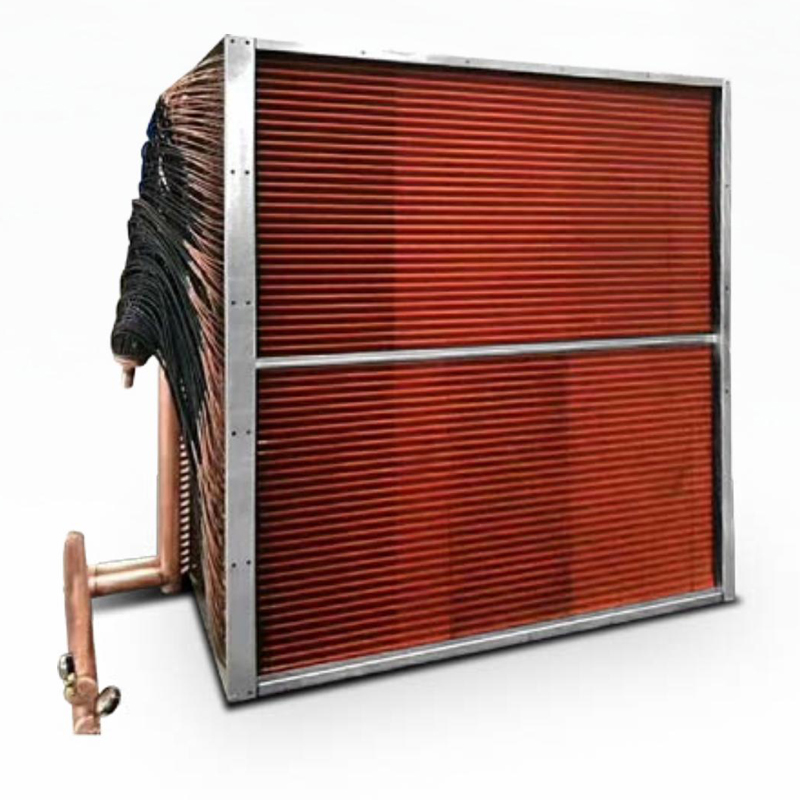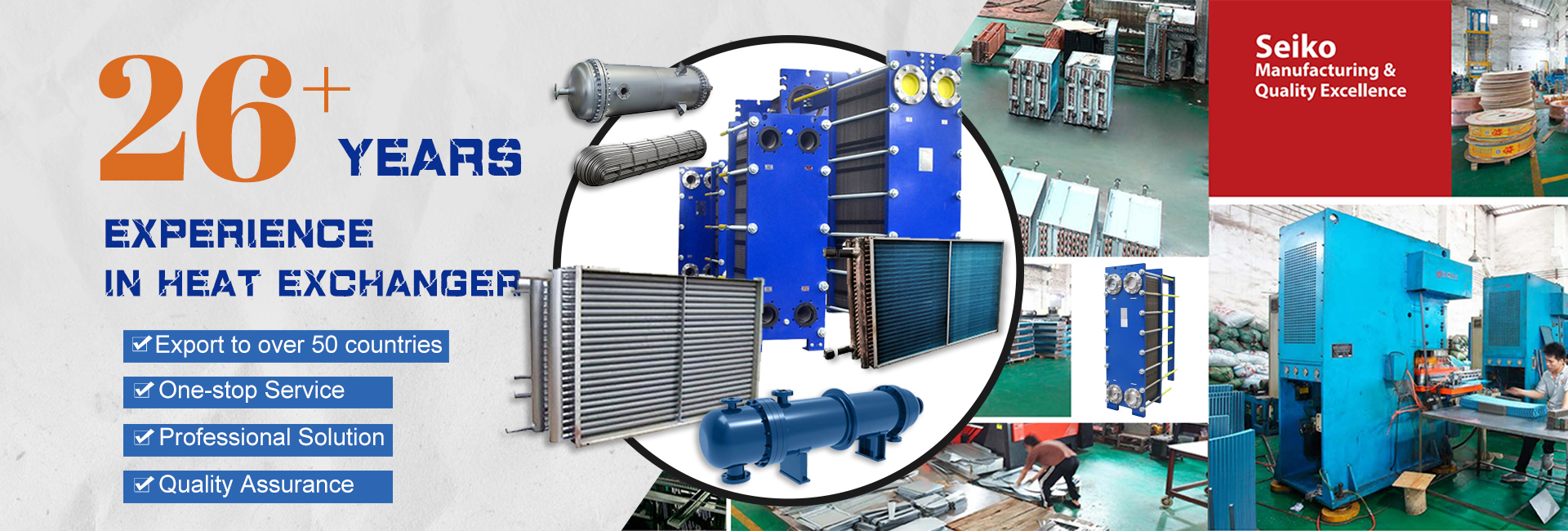Evaporative Air Cooler: 100% Free Cooling System
An evaporative air cooler is a device that cools the air by evaporating water.
It is an energy-efficient system that consumes less electricity than an air conditioner.
Its installation in factories, warehouses, offices, and homes is very common, as it is an ecological and simple system to use.
In addition, an evaporative air cooler is also a good alternative for hot and dry climates where the humidity is low and it is essential to save energy.


1. What Is an Evaporative Air Cooler
An evaporative air cooler, or swamp cooler, is an air conditioner that cools air using water evaporation.
The hot air passes through a water-soaked pad, and as the water evaporates it absorbs the heat from the air.
The cooler blows the resulting cold air into the room or working space.
Evaporative coolers do not contain refrigerant gases, use less electricity, and produce fresh air circulation, making them an alternative to regular air conditioners.
See our Industrial Ventilation System for better factory air circulation.
2. How an Evaporative Air Cooler Works
Les evaporative air cooler works in the following way:
- Air Inlet: The hot air enters the system through the filters or the air inlet vents.
- Evaporation: The air passes through the wet cooling pads.
- Heat Absorption: The water evaporating on the pad surface absorbs heat, cooling the air.
- Air Distribution: A fan inside the cooler distributes the cooled air evenly throughout the room.
- Continuous Cycle: Fresh air replaces stale air, ventilating the space.
This is a simple but efficient cycle that not only cools the air, but also purifies it.
Learn about evaporative cooling efficiency from Energy.gov.
3. Types of Evaporative Air Coolers
There are many different types of evaporative air coolers available on the market today, each with its own set of features and benefits. The most common types of evaporative air coolers are:
A. Portable Evaporative Air Cooler
The Portable Evaporative Air Cooler is a small, lightweight unit that can be easily moved from room to room. This type of cooler is ideal for use in homes and small offices. They are also relatively easy to set up, and do not require any installation.
B. Window-Mounted Evaporative Cooler
The Window-Mounted Evaporative Cooler is a unit that is mounted on a window or wall and blows outside air into the room. This type of cooler is best suited for cooling down one room at a time.
C. Industrial Evaporative Air Cooler
The Industrial Evaporative Air Cooler is a large unit that is used to cool down factories, workshops, or warehouses. They provide large areas with air conditioning and have a high airflow rate, making them perfect for industrial use.
D. Ducted Evaporative Cooling System
The Ducted Evaporative Cooling System is a rooftop or external unit that is connected to the ducts inside a building. They are best used to cool multiple rooms at once, as they can distribute cooled air more efficiently than other types of evaporative coolers.
Each type of evaporative air cooler has its own benefits and drawbacks, so it is important to consider all of your options before making a purchase decision.
4. Features of Evaporative Air Coolers
Some of the features to look for in an evaporative air cooler include:
- High-Efficiency Cooling Pads:These pads absorb more water, providing better cooling.
- Variable Speed Fan Control:Allows you to adjust the airflow according to your needs.
- Automatic Water Refill System:Keeps the unit running all the time by automatically refilling the water tank.
- Remote Control and Timer Settings:Make it easier to operate the cooler from a distance or set it to turn on/off at specific times.
- Low Noise Design: This feature is important for maintaining a quiet indoor environment.
- Durable ABS or Metal Housing:This will ensure that your cooler lasts for many years without problems.
Filters: Some models also come with filters that help trap dust particles and pollen from circulating in the air.
5. Benefits of an Evaporative Air Cooler
The advantages of using an evaporative air cooler include:
- Energy Efficiency:The evaporative cooler can use up to 75% less energy when compared to traditional air conditioners.
- Environment Friendly:They are free from harmful refrigerants and ozone-depleting substances.
- Provides Fresh Air Flow:The air cooler recirculates the air inside the room, which is full of oxygen.
- Low Operating Cost:They have fewer components than a typical AC, which reduces maintenance costs.
- Humidity Control:It can be used to add humidity to dry indoor air, preventing dry skin.
- Easy Installation:No need to install a compressor or refrigerant piping.
The evaporative cooler is also suitable for open or semi-open areas.
6. Applications of Evaporative Air Coolers
The following are some of the many applications where evaporative air coolers are used:
- Factories and workshops
- Warehouse
- Commercial use such as markets or office buildings
- Residential use in living rooms or patios
- Livestock areas
- Greenhouse plants
Industrial evaporative coolers can also be used in combination with ventilation systems to ensure optimal air exchange rates.
7. Comparison with Air Conditioning Systems
While both systems cool the air, there are key differences:
Fonctionnalité | Evaporative Air Cooler | Air Conditioner |
Energy Use | Low | High |
Installation | Simple | Complex |
Cooling Method | Water Evaporation | Refrigerant Compression |
Air Quality | Fresh, Oxygen-Rich | Recycled |
Best Climate | Dry, Hot | Humid or Variable |
Thus, evaporative air coolers are best suited for dry, hot climates where natural evaporation works efficiently.
8. Maintenance Tips
- Clean the cooling pads regularly, at least once a month.
- Replace the filters if necessary.
- Check the water pump for any issues.
- Drain the tank from time to time to prevent scale and deposits.
- Wipe the fan blades and vents from dust and debris.
9. Benefits of Evaporative Air Cooler
- Simple and low-cost maintenance.
- Easy and safe operation.
- Highly energy-efficient compared to other cooling devices.
10. Comparison with Other Cooling Systems
- Evaporative coolers use less energy and emit fewer greenhouse gases than air conditioners.
- Unlike refrigerants, they don’t use harmful chemicals that deplete the ozone layer and contribute to global warming.
- Evaporative coolers are more economical and reliable than fan heaters or swamp coolers.
11. Frequently Asked Questions (FAQ)
Q1: Does an evaporative air cooler work in a humid climate?
A: Evaporative coolers work best in dry climates. In humid climates, the cooling effect is reduced.
Q2: Does an evaporative air cooler need any special installation?
A: No, an evaporative air cooler does not require any special installation. Most models only need to be connected to a power source and a water supply.
Q3: How often should I change the cooling pads?
A: The cooling pads should be changed every 6–12 months, depending on the usage and water quality.
Q4: What is the power consumption of an industrial evaporative air cooler?
A: The power consumption of an industrial evaporative air cooler ranges from 200W to 1500W, depending on the airflow capacity.
Q5: Can evaporative coolers help in dust reduction?
A: Yes, evaporative coolers can help in dust reduction. The water pads in the cooler trap the dust particles, thereby improving the air quality.
12. Conclusion
Les evaporative air cooler is a cost-effective, energy-efficient, and environmentally friendly cooling solution. With its low operating cost, easy maintenance, and non-polluting features, it is a perfect choice for homes and industries.
It can help reduce energy bills, improve air quality, and provide a comfortable and healthy environment for people. It is a highly recommended solution for anyone looking for a practical and green alternative to traditional air conditioning.
Businesses looking for an easy-to-use and environmentally friendly cooling solution can’t go wrong with an evaporative air cooler.

